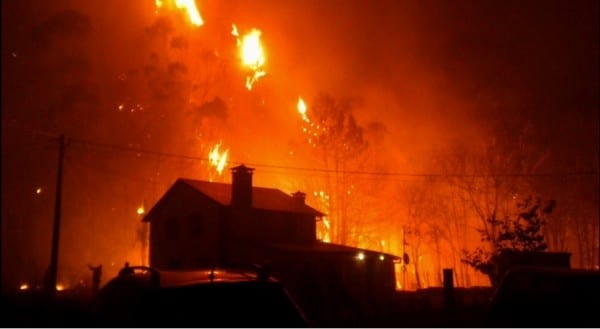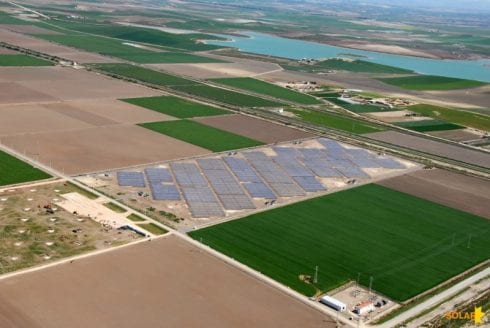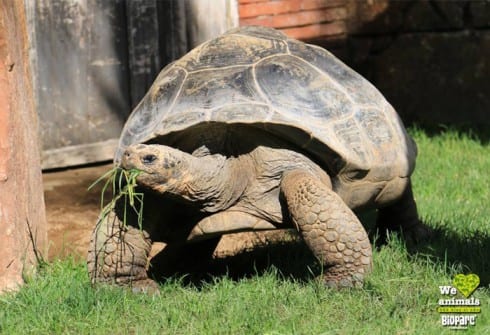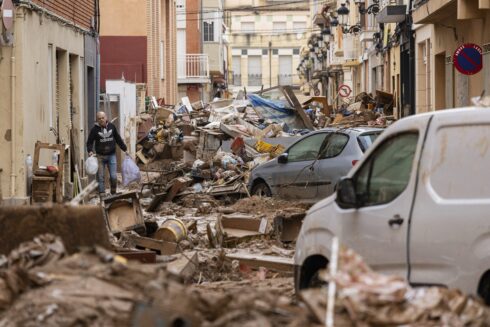 ARSON is being mooted as the cause of more than 120 forest fires currently ripping through northern Spain.
ARSON is being mooted as the cause of more than 120 forest fires currently ripping through northern Spain.
While unseasonably warm temperatures and high winds may account for the blazes, officials suspect underhand tactics from farmers are to blame.
The head of the national forestry association, Raul de la Calle, said high temperatures ‘do not explain’ the fires and added that ‘cattle farming interests could be responsible’.
Firefighters continue to tackle the fires, which span Cantabria, Asturias and the Basque Country.
More than 80 fires are currently burning in Cantabria, where 2,000 hectares (5,000 acres) of land have been destroyed.
About 100 soldiers have been sent to the region.









Spanish and Portuguese burn down the Amazonian rain forest to raise beef cattle. The fertility of the rain forest is premised in the fact that it is effectively a closed cycle of growth, decay and regeneration.
After a few years the nutrition is washed away into the rivers and all that’s left is sand. So the morons continue this cycle of destruction ad infinitum.
Spain is going through a process of desertification and nowhere more so than in northern Spain. Forests naturally attract rain clouds. So what these stupid farmers are doing is destroying their future. There will be no room or welcome for their children in northern Europe – you reap what you sow and live with it or die – the choice is yours, make it carefully, with intelligence.
Everyone, including the head of forestry association, knows that the fires are set by cattle and goat herding interests. The first year that I was in Asturias, I witnessed an arsonist through my binoculars while watching hawks soaring above the narrow creek valley that separates our side from the steep peña 400 meters away. It was a Sunday afternoon. To my amazement I saw a man setting a fire with an accelerant, then hurrying out of sight around the peña, presumably to the rough track which curves up to the top on the other side. No police, guardia civil or SEPRONA came even though the blaze was huge, visible for many kilometers, burning the entire mountain for several days. As a new property owner and resident, I was hesitant, but finally at the urging of an Asturian neighbor, I reported what I saw to SEPRONA. The particular fire setter was a herdsman from a neighboring village, and disappeared for some months. Likely he was in hiding as we herd nothing about his arrest or detention, gossip that would have spread faster that his grass fire. He did, however, lose grazing rights to the peña.
A year or two later, another neighbor on the other side of our ridge set fire at the top of our property, burning a dozen or so seedlings I had planted. A neighbor who had adjacent pastures told me who it was. I confronted him firmly and politely that afternoon. Of course he denied everything, saying he was ‘cleaning’ the weeds and little trees in the abandoned access road separating our pastures, but saw no fires, even though the grass was still smoldering. I told him, “Sr., the next time someone sets a fire here I will call SEPRONA. So if you hear who set this one, maybe you should let him know.” The man, a prominent, traditional herdsman in our area looked shocked, but we have not had adjacent fires since.
A year later someone burned an even larger mountain a couple kms away, destroying all vegetation including the few tufts of old growth trees within the mountain’s crevices. It burned for a week. Nothing now remains except bracken, gorse and rocks. That was 10 years ago and there has been no recovery of vegetation, not even for goats.
Two years ago on a dry, windy Sunday afternoon (of course!), a fire broke out across the way in our neighbors woodland next to his pastures. The fire ran up the slope to the top were it stopped at a rock outcropping. Our neighbor did not set it. More likely they were set by someone passing by on the road. My wife and I went to the Guardia Civil, who were about to close for the day. The officer in charge asked: “How close is it to a house?” I explained about 100 meters. He replied, “The house isn’t likely in danger.” And they left leaving us stand in the entry way. They were disinterested.
We have good friends living close to the summit of a peña over-looking Cangas de Onis. They have had fires every year that I can remember. This year the only reason their house was not yet again endangered was due to the fact that last year fire were fought valiantly with helicopters, bomberos with shovels and a bulldozer: there now is a trench a few meters behind their house, and nothing left to burn on the slope. Everyone is quite certain who the culprit is (a local herdsmen free-ranging goats), but local laws of evidence prevent prosecution unless the person is seen exactly in the act. And these arsonists are too clever. And they have family and political connections with the all powerful local Livestock Association, local police, even SEPRONA. And they know vigilance is minimal on Saturday afternoons, Sundays and holidays.
This saga could go on and on, but most readers already know that the ‘wall of silence’ among herdsmen works like the ‘wall of silence’ among other gangs: you talk at your own peril. Neighbors don’t want trouble with these networks. I was warned by the person who sold me our finca, “Because you have planted trees in your prados, there is talk of burning you out.” I responded, “Tell them I come from Chicago and have a pistol.” Maybe they believed me because friends in a town 20 kms away were told by their butcher that they should be careful when they visited my finca!
Clearly, the stranglehold on rural land use by herdsmen, especially, Asturias and Galicia will need to be broken. How long that takes is anyone’s guess. Currently, there are not enough people willing to speak out, so the old ways of bullying persist.
Chas,
an excellent post and highlights in another part of Spain that there is an undeniable nationwide apathy toward real change in mentality, it just is’nt happening, the almost total unending corruption in the political class is just one aspect of it.
Franco commanded that eucalyptus should be planted everywhere in Galicia and in Cantabria and Asturias, oak should be cut down and fast growing conifers planted instead, nothing has changed.
All the Galician emigrants give permission for eucalyptus to be planted and cut down every 12 years, nice easy money. That’s why most of Galicia is blighted by these depressing forests of alien grey green blankets. The irony is that Galicia could be providing most of Europe’s lamb. If the oak forests were replanted in Cantabria and Asturias it would provide an economic cushion for future generations but sadly the future has never interested the Spanish unlike the civilisation of Al-Andaluz that carefully husbanded the land, it was a sad day for the peninsular and for Islam when it fell.